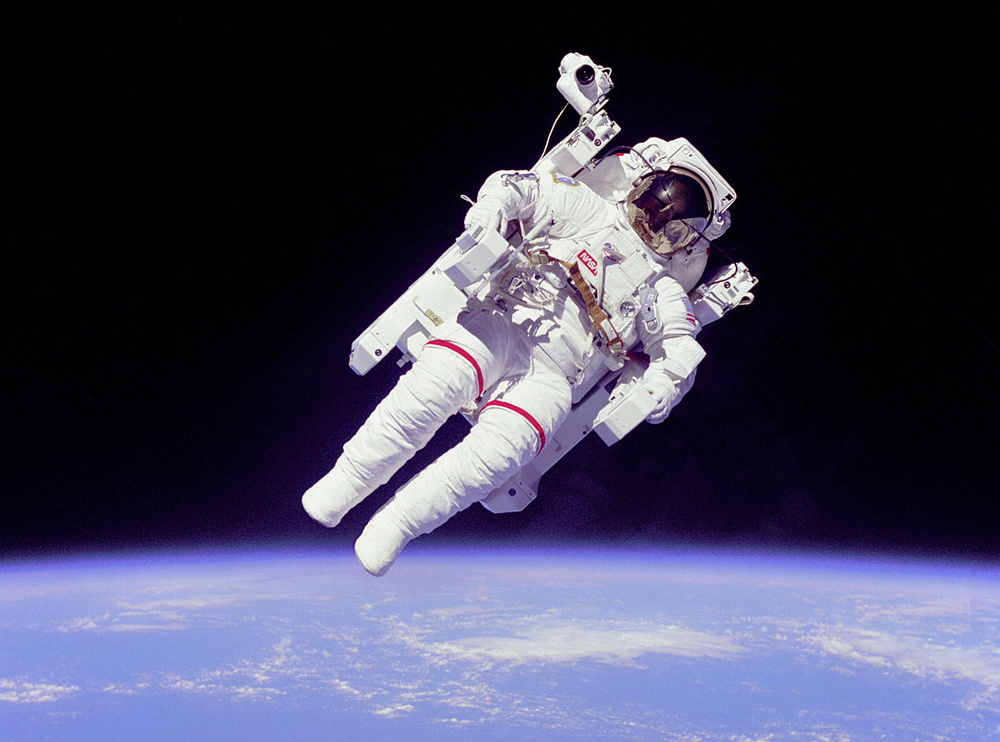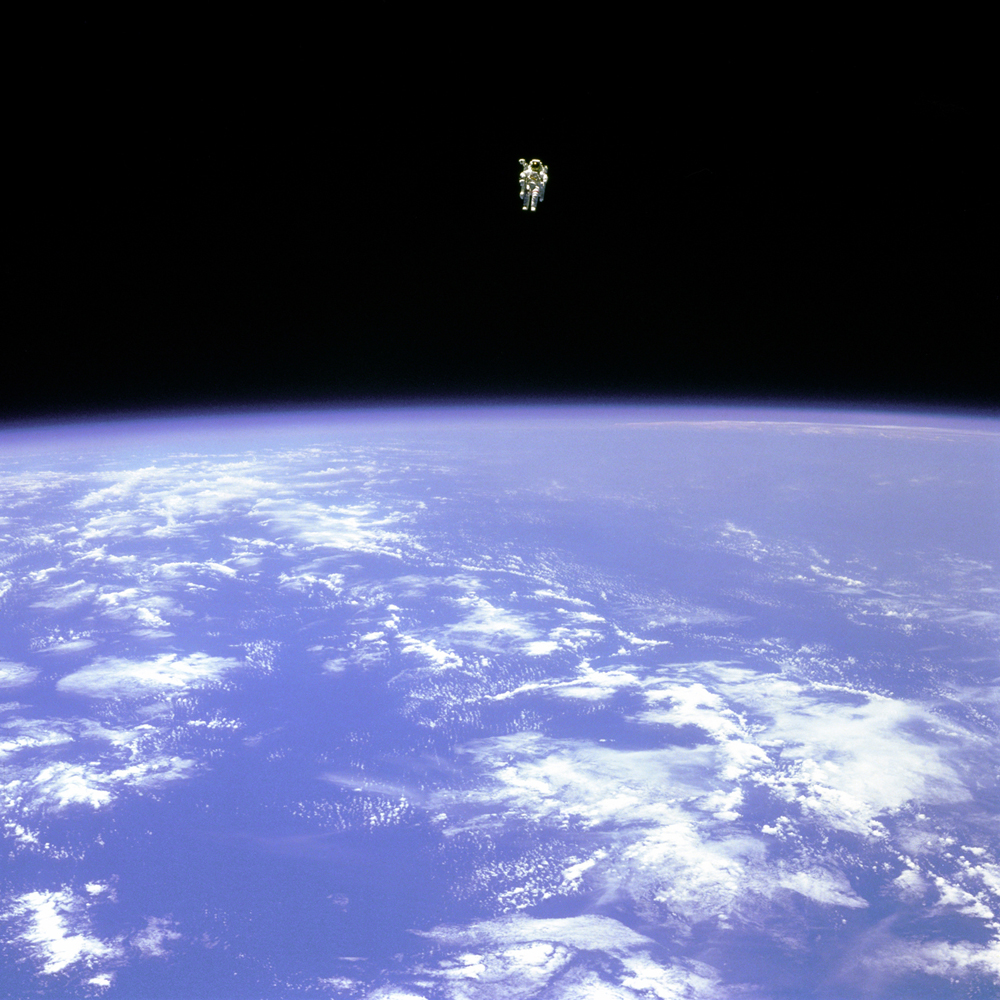
On Feb. 7, 1984, “astronaut Bruce McCandless ventured further away from the confines and safety of his ship than any previous astronaut had ever been,” notes the caption to the above photo on NASA.gov. “This space first was made possible by a nitrogen jet-propelled backpack, previously known at NASA as the Manned Maneuvering Unit or MMU. After a series of test maneuvers inside and above [Space Shuttle] Challenger . . . McCandless went ‘free flying’ to a distance of 320 feet away from the orbiter.”
Thirty years later, the photographs of McCandless’ breathtaking, first-ever untethered space walk during the fourth Challenger mission still stun. (McCandless was joined on his historic walk by Col. Robert L. Stewart, but it is the stirring photos of McCandless—made by Challenger‘s pilot, Robert “Hoot” Gibson—that have endured.)
McCandless was a Navy aviator in the early 1960s—he graduated second in the Naval Academy’s class of 1958, earning a master’s degree in electrical engineering—and in 1966 was one of 19 fliers selected by NASA for astronaut training. He was instrumental in designing and testing the MMU jet pack, and for 18 years before the Challenger mission that would, in a sense, immortalize him, McCandless played a role in some of NASA’s greatest triumphs: he was, for example, the Capsule Communicator, or CAPCOM, during the Apollo 11 mission.
Forty-five years after Apollo 11’s lunar mission, it’s only right that we take a minute to celebrate another astonishing, hair-raising NASA first. Namely, that moment, 15 years after Armstrong and Aldrin walked on the moon, when McCandless briefly broke free, at-once minuscule and momentous—the human form sharply etched and intrepid against the limitless, indifferent void.

More Must-Reads from TIME
- How Donald Trump Won
- The Best Inventions of 2024
- Why Sleep Is the Key to Living Longer
- How to Break 8 Toxic Communication Habits
- Nicola Coughlan Bet on Herself—And Won
- What It’s Like to Have Long COVID As a Kid
- 22 Essential Works of Indigenous Cinema
- Meet TIME's Newest Class of Next Generation Leaders
Contact us at letters@time.com